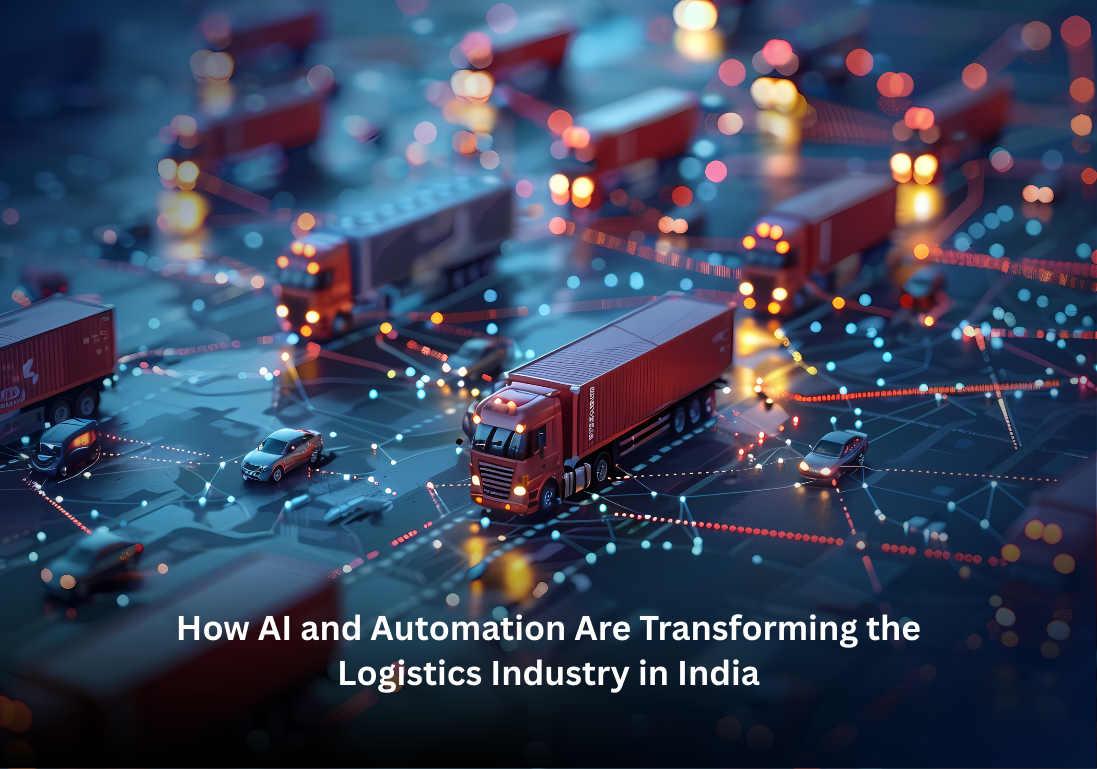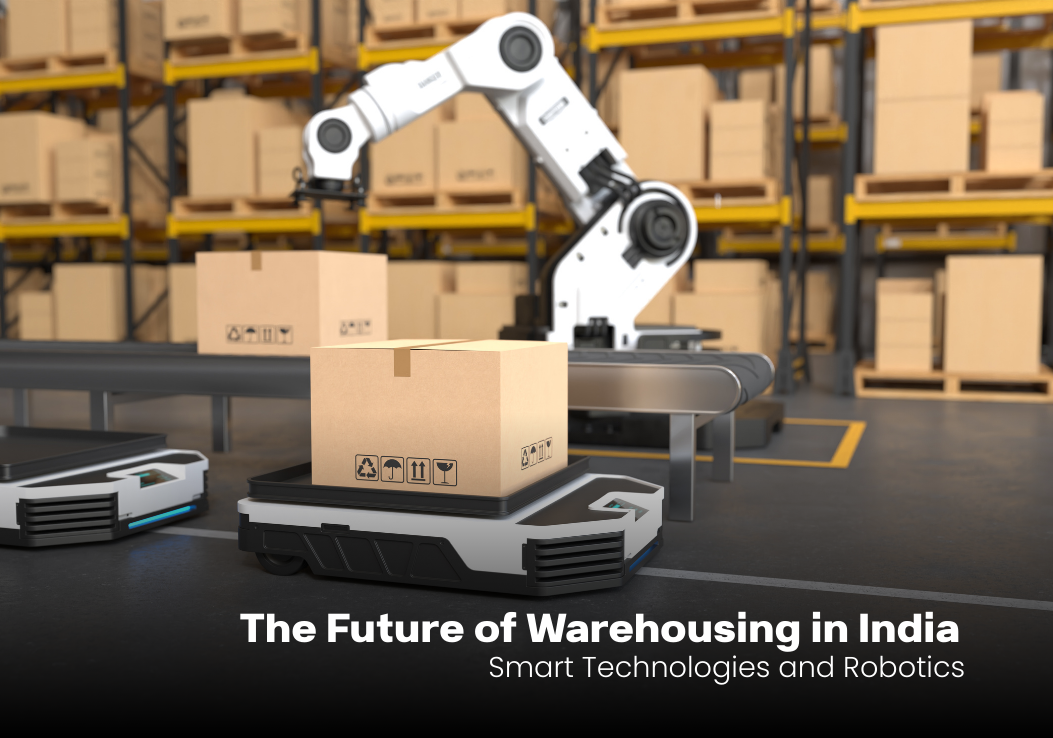Taking the Long View—Logistics and Innovation as ISCL’s Guiding Principle
Every facet of the Indian economy hinges on the logistics sector fulfilling e-commerce orders, moving medical supplies, and sending components to factory floors all rely on this link, and the link is now being fortified through technology.
Today’s Indian logistics is valued at over 250 billion and is on track to surpass 380 billion in just over two years. Despite the scale, persistent challenges, unexpected hold-ups, elevated costs, and systems that still operate in silos impede that growth. AI and automation, already redefining core processes from freight forwarding to smart warehousing and final-mile delivery, promise to remove these friction points.
During the annual International Supply Chain & Logistics Summit (ISCL), executives keep returning to three themes: innovation, sustainability, and open collaboration. AI no longer occupies the “futuristic technology” box on the presentation slide its algorithms and robots are the primary enablers of India’s $5 trillion growth storyline.
Defining AI in Supply Chain Management—A Forward-Facing Lens
How does the concept of AI translate into practical, day-to-day applications within the logistics industry?
When firms introduce artificial intelligence to supply chains, the technology begins by scanning existing data to forecast future demand, then runs millions of simulated journeys to select the fastest and least costly delivery route. Through real-time analysis, it monitors potential interruptions, storm trajectories, and traffic spikes and recalibrates on the fly, ensuring deadlines still meet customer expectations.
Automation covers all the essentials: warehouse robotics that stack and sort, high-speed scanning systems that stream data to the cloud, and AI dashboards that compile inventory and shipment metrics, all executing the mundane with precision.
When you blend these capabilities, you create a logistics network that moves faster, operates with surprising consistency, and actually magnifies human potential. By taking over repetitive tasks, these systems free up professionals to focus on analyzing trends, anticipating challenges, and executing strategy.
A Reality Check on India’s Logistics Landscape
India’s logistics landscape isn’t a straight-line path of growth; it’s a curving mix of promise and pressure.
- Cost Pressure: Logistics still gulps down 13–14% of the national GDP, a figure that widens the competitiveness gap to most benchmarks.
- Silo Structure: A multitude of small, regional operators loves the status quo, which complicates seamless data flow and network coherence.
- Volatility: Monsoon surges, city choke-points, and on-the-fly policy changes inject a level of uncertainty that eludes brute-force planning.
Acknowledging this convergence, the government is driving a coordinated push. Initiatives such as PM Gati Shakti, the 2022 National Logistics Policy, and the ONDC (Open Network for Digital Commerce) are aligned under a common digital vision. The once paper-heavy corridors of logistics are now transitioning to cloud-based systems, with AI emerging as the next defining chapter.
Supply Chains—AI for Forecasting, Visibility and Agility
For instance, a logistics firm gearing up for a Diwali surge and relying on spreadsheets and gut instinct. Now, machine learning powers demand forecasting, revealing demand spikes up to months ahead and allowing managers to fine-tune orders without late sleepless nights.
- Threshold Alerts for Replenishment: Silver CBD dashboards trigger real-time stock orders a shift ahead of visual spikes, curbing surplus.
- AI for Demand Forecasting: Predict insights, convert to purchase orders, deliver items, and shrink observability. POS data of card numerical data anticipation. Real-time location data transported to workspace.
Example: top-tier Indian marketplaces exploit layer three algorithms for data mining to browse patterns. In month nine, surfing patterns spike, and AI routers optimally and regionally light commodities, shift orders, and ship declarations, accelerating from D1 containers.
Step inside a smart Indian distribution center, and you’re welcoming a cloud. Workers trading orders with pick and ship requests, low bands on the ten least used ladders of efficiency. AOC bricks. ASN spreadsheets and delivery orders are set on a backend queue at rosy touches. Automatically app, online forks engaged on shift. A/C labels scanned via visual computer.
Robotics for logistic performance: Collmins. Kitting. Dot-M robots record and stock. Kitting for tin case virtue. Station auto showcase carton on the floor. From the transit hub, vision AI assignments removed on-web raise. Automated storage orders by hydro. Consequences. Cembi sensors tally and trigger orders.
Flipkart and Amazon India stand out as trailblazers. They’ve poured resources into smart warehouses, deploying AI-driven robots that sort, scan, and seal, slashing human error and speeding up dispatch. Even mid-sized firms are climbing aboard with affordable bots and cameras that plugins to older conveyor systems. By tweaking the existing stack, investments stay manageable and the payback quick.
At ISCL, we see a constant insight: processes get leaner, yes, but they also get greener. Fewer trips up and down aisles mean lower electricity bills. A conveyor that tracks the fastest route through its zone runs for fewer minutes, and the cooling they no longer need keeps the plant’s carbon footprint in check.
When it comes to sustainability, the real cost pressure lies in the last mile. Delays in placing a package directly in the customer’s hands not only impact profitability but also erode trust — the most valuable currency in today’s market. This is precisely where intelligent last-mile automation becomes critical.
Some drones and delivery robots are logging study miles in the country’s testing grounds; the steering chatter is already ledgered in the books. More butter is being spread on bread through AI that ingests traffic, daylight, and loading dock docks across densely populated lanes in Mumbai and Delhi. Look at tweaking Dunzo and Blinkit, their dispatch algorithms reshuffling deliveries at the speed of network latency to propose 15-minute windows. The magic of fast delivery isn’t voodoo; it’s the hidden orchestration of logistics layers, humming.
Freight Forwarding & Route Optimization — The Invisible Pipelines
Freight forwarding rarely makes headlines, but it remains a backbone of the global economy. Today, AI is steadily untangling long-standing bottlenecks, bringing new efficiency to a sector that thrives on precision and timing.
- Dynamic Pricing: algorithms recalculate shipment costs every hour, reacting to demand, container availability, departure time, and even fuel prices.
- Cargo Tracking: instead of waiting for sensors to beep, predictive models alert managers to shipment delays before the container even hits the bottleneck.
An Indian forwarder recently consolidated customs manifests, port-delay alerts, and real-time weather into a single dashboard. Continents away, the containers rolled 20% faster, no fire drills, just clean data.
Predictive Analytics for Risk & Resilience
The pandemic left supply chain leaders with one unshakable rule: design systems that anticipate the unexpected. Today’s forecasting algorithms scan satellite feeds and track developing cyclones, rerouting shipments before floodwaters rise or securing scarce berths ahead of strikes.
At ISCL briefings, CEOs lean on words like real-time and actionable. The value proposition is clear—when algorithms flag a risk, alerts trigger, systems pivot, freight flows, and trade maintains its resilience.
Benefits of AI in Supply Chain and Logistics Automation
Beyond the marketing narrative, the critical point is—what does the ledger actually reveal?
- Lower Costs: Algorithms chart paths that shave 10% or so off fuel, port bills, and unplanned dwell time. Automation logs, scrubs, and processes data at a higher velocity than 10 clerks.
- Speed: quotes convert in minutes, and deliveries that once required 10 days routinely arrive in 8.
- Customer Delight: real-time dashboards, once a luxury, now feed end-user apps. Monitoring cargo in transit is what customers assume, and shipments that arrive on or even ahead of promised schedules feel like a strategic win.
- Sustainability: Smarter logistics trim both waste and carbon emissions.
Put another way: the gains from AI in supply chain operations aren’t speculative anymore; they’re on the balance sheet.
The Human-AI Dynamic: Partnership, Not Obsolescence
A frequent worry is that AI will seize human careers.
I visited a logistics supervisor in Delhi who greeted the new AI dashboard with skepticism. “I’ve done every shipment tally the same way for twenty years,” he repeated. Four weeks later, his tone changed. “I don’t know how I survived without the forecasts and route options,” he said, smiling. His expertise still anchors the operation; AI just frees his mind from datum-point counting. Tomorrow, the equation will still be human-eye plus machine-eyes on the loading dock, not a contest.
Obstacles to Onboard: Capital, Confidence, and the SME Lens
While mega-hubs add drones and digital twins, the family-owned warehouse on the city’s edge faces steeper valleys:
- Upfront Capital: The latest robotics and AI applications demand a financial jump.
- Confidentiality Fears: Smaller firms worry the platform that learns from their shipping data will leak competitive secrets.
- Talent Pipeline: Passable digital-skills training is still not a given on every warehouse shift.
That’s why initiatives such as ISCL matter. They create forums where agile developers and corner store logistics teams exchange hurdles and hacks, demonstrating scaled-down options that work and stitching deals that pull technology into reach.
Subscribe to International SCL and get in-depth insights on logistics, automation, and supply chain trends delivered straight to you.
Where India Is Headed: 5G, IoT, Sustainability, and AI
India’s next great leap is not AI alone; its real promise lies in the integration of AI, 5G, and IoT. Visualize delivery cabs and trucks conversing in real-time, sensors checking and relaying temp profiles for every shipment, and AI forecasting congested intersections before the first brake lights flash.
Even the green imperative accelerates. AI-driven green logistics optimizing fuel, charting the best route for every electric truck, dynamically swapping drayage for the lightest emissions has already become a pillar of India’s logistics master plan.
Actionable Steps for Indian Businesses
Enterprises eager to weave AI into their logistics flows should:
- Pilot, Don’t Plunge: Test a shut-tight AI route optimizer on one lane before the nation’s highways.
- Team Up: Seek micro venture startups and deep tech providers whose toolkit is already ready.
- Join the Network: Go to convos such as ISCL to scout out budget-scoped, scalable playbooks and benchmarks.
Conclusion—Smart Logistics as India’s Leap Forward
India’s logistics has moved beyond merely transporting goods—it is now in the business of moving smart. Predictive dashboards, warehouse robotics, drone-enabled border clearances, and blockchain-backed receipts show that AI is no longer a supporting tool; it is actively rewriting the economic playbook.
The signals are clear, the groundwork is laid. Those who embed AI into their pilots today will be the leaders charting not just the delivery of goods, but the trajectory of India’s growth.
FAQs
1. In what ways is artificial intelligence shaping Indian supply chains?
From spotting inventory lags and mapping smarter delivery routes to running robotic warehouses and tracking shipments minute by minute, AI is driving every leg of the journey.
2. What innovations are driving Indian fulfilment centres going forward?
We’re seeing a fresh wave of automated guided vehicles, intelligent racking schemes, and AI-powered sorting robots not just at giants, but at astute midsize players, too.
3. Can AI close the efficiency gap in urban last-mile delivery?
Absolutely. Real-time mapped routes and AI-assisted delivery drones are already shaving precious hours and cutting costs in crowded metros.
4. What hurdles still block AI entry for Indian logistics?
Sky-high investments, a workforce still catching up on the tech, and worries over privacy of shipment data hound companies, particularly in the small and medium bracket.
5. A small logistics firm in India wants to begin with AI. Any recommendations?
Start small with cloud-based AI dashboards, team up with innovative tech startups, and tap networking groups like the ISCL for tested, budget-friendly tools.
Share Your Inputs
What single logistics pain point do you wish an AI solution could tackle for you? Tell us, and we’ll elevate the insights in the next ISCL discussion.


